WOW
SLOW TRAVEL
52 CITIES
1 WEEK
EACH CITY
52 WEEKS
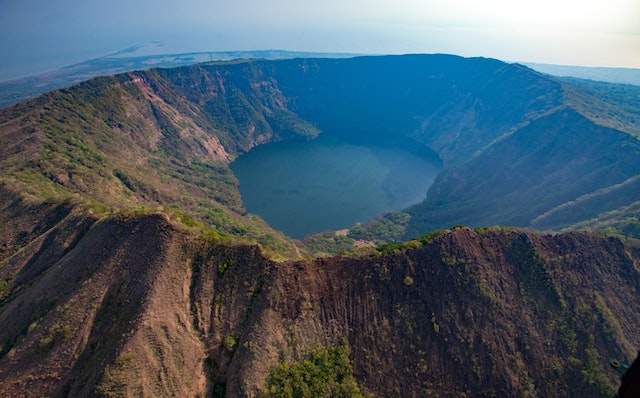
Nicaragua
Nicaragua, located in Central America, is a country known for its stunning natural landscapes, rich cultural heritage, and warm hospitality. While it has faced political and economic challenges in the past, Nicaragua is gradually emerging as a popular travel and retirement destination due to its affordability and natural beauty. Here’s an overview of this vibrant country:
Geography and Landscapes: Nicaragua is a land of contrasts, with a diverse geography that includes volcanoes, rainforests, lakes, and pristine beaches. The country is home to over 20 volcanoes, some of which are active. Lake Nicaragua, the largest freshwater lake in Central America, and Lake Managua are prominent features of the country’s landscape.
Culture and Heritage: Nicaragua has a rich cultural heritage influenced by indigenous tribes, Spanish colonialism, and African roots. The capital city, Managua, and other cities like León and Granada showcase well-preserved colonial architecture. The country’s cultural traditions are expressed through music, dance, and festivals like the colorful Carnival of Granada.
Language: Spanish is the official language of Nicaragua, but English is widely spoken in tourist areas and by the younger population.
Outdoor Adventures: Nicaragua is a paradise for outdoor enthusiasts. Hiking to the summits of volcanoes like Cerro Negro and Mombacho, exploring lush rainforests, and enjoying water sports on the Pacific and Caribbean coasts are popular activities.
Affordability: One of Nicaragua’s most significant draws for retirees and travelers is its affordability. The cost of living, including housing, food, and healthcare, is relatively low compared to many other countries, making it an attractive option for those on a budget.
Retirement Destination: Nicaragua has gained popularity as a retirement destination for Americans and other expatriates. The country offers a range of retirement communities and services, especially in cities like Granada and San Juan del Sur.
Healthcare: Nicaragua has made strides in improving its healthcare system. While medical facilities in major cities are adequate for routine medical care, many expatriates choose to purchase health insurance that covers treatment in both Nicaragua and their home country.
Cuisine: Nicaraguan cuisine is flavorful and varied. Traditional dishes include gallo pinto (a rice and beans dish), nacatamales (a type of tamale), vigorón (a dish with yuca and pork), and fresh seafood along the coast. Street food, such as tacos and quesillos (cheese-filled tortillas), is popular and affordable.
Safety: Nicaragua is generally considered safe for tourists and retirees, with a low crime rate compared to some neighboring countries. However, like any destination, it’s essential to take common-sense precautions.
Challenges: Nicaragua has faced political unrest and economic challenges in recent years. It’s crucial for travelers and retirees to stay informed about the current situation and consult travel advisories when planning a trip or considering retirement in the country.
Nicaragua’s combination of natural beauty, affordability, and warm hospitality make it an enticing destination for travelers and retirees seeking an authentic Central American experience. Whether you’re exploring the historic cities, relaxing on the beaches, or embarking on outdoor adventures, Nicaragua offers a diverse range of experiences and a chance to discover its unique cultural tapestry
Nicaragua is a beautiful and affordable country in Central America that has become increasingly popular among American retirees. Its warm climate, natural beauty, and low cost of living make it an attractive destination for those looking to retire abroad. Here are some of the best cities and regions for Americans to consider when retiring in Nicaragua:
Granada: Granada is one of Nicaragua’s most well-known and beloved cities. Located on the shores of Lake Nicaragua, it boasts colonial architecture, a vibrant expat community, and a relaxed lifestyle. The city is known for its colorful buildings, historic churches, and a wide range of restaurants and shops. It’s a popular choice for retirees due to its charm and amenities.
San Juan del Sur: If you’re looking for a beachside retirement, San Juan del Sur is a top choice. This coastal town is known for its stunning beaches, surf culture, and vibrant nightlife. It’s a laid-back destination with various housing options, from beachfront condos to hillside homes.
León: León is another colonial gem in Nicaragua, known for its rich history and artistic culture. The city is home to well-preserved colonial architecture and is a center for art and poetry. It’s also close to the beach, making it an excellent choice for retirees who want a mix of cultural experiences and beachside relaxation.
Matagalpa: For those who prefer a cooler climate, Matagalpa is a mountainous region known for its coffee plantations and lush landscapes. The city of Matagalpa itself offers a comfortable climate and a slower pace of life, making it ideal for retirees seeking a peaceful environment.
Ometepe Island: Ometepe is an island formed by two volcanoes in Lake Nicaragua. It’s a nature lover’s paradise, with opportunities for hiking, birdwatching, and exploring lush forests. The island’s tranquility and natural beauty make it an attractive option for retirees seeking a remote escape.
Jinotepe: Located in the department of Carazo, Jinotepe offers a quieter and less touristy atmosphere compared to some other cities in Nicaragua. It has a pleasant climate, friendly locals, and a low cost of living.
Estelí: Estelí, in northern Nicaragua, is known for its tobacco production and beautiful mountainous surroundings. The city offers a low cost of living and a growing expat community, making it an affordable option for retirees.
Rivas: Rivas is a historic town near Lake Nicaragua and the popular surf destination of San Juan del Sur. It provides a quieter and more affordable alternative for retirees who appreciate a laid-back lifestyle.
When considering retirement in Nicaragua, it’s essential to conduct thorough research, visit potential destinations, and consult with local expatriate communities to gain insights into the lifestyle and practicalities of retiring in the country. Additionally, it’s advisable to consult with legal and financial experts to understand residency requirements and tax implications for American retirees living abroad
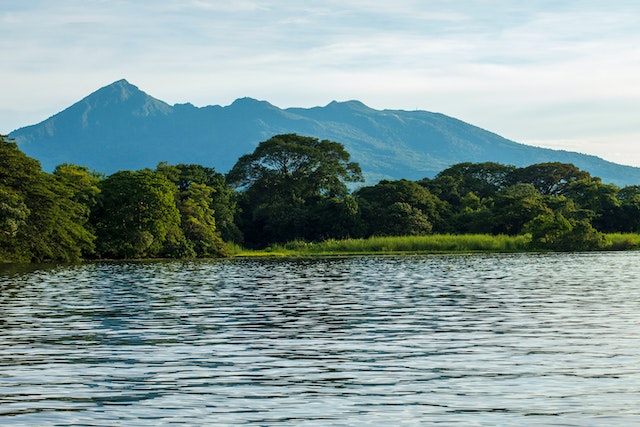
Granada
Granada is a picturesque and historic city located on the shores of Lake Nicaragua in Nicaragua, Central America. Known for its well-preserved colonial architecture, vibrant culture, and stunning natural surroundings, Granada is a popular destination for travelers and retirees alike. Here’s a closer look at this charming city:
Colonial Heritage: Granada is one of Nicaragua’s oldest cities, founded in 1524 by Spanish conquistador Francisco Hernández de Córdoba. Its historic center features a wealth of colonial-era architecture, including colorful buildings, churches, and cobblestone streets. The city’s architecture reflects a mix of Spanish, Moorish, and indigenous influences.
Parque Central: At the heart of Granada lies Parque Central, a bustling central square surrounded by cafes, shops, and restaurants. This lively gathering spot is an ideal place to people-watch, enjoy the local ambiance, and take in the stunning views of the nearby Cathedral of Granada.
Cathedral of Granada: The city’s impressive cathedral, formally known as the Cathedral of the Incarnation, is an iconic landmark. Its yellow facade and neoclassical design make it a prominent feature of the central square. Visitors can explore its interior and enjoy panoramic views of the city from its bell tower.
Lake Nicaragua: Granada’s location on the shores of Lake Nicaragua (also known as Lake Cocibolca) adds to its allure. The lake is the largest in Central America and provides opportunities for boat tours, fishing, and relaxation on the nearby Islets of Granada—a group of small islands formed by volcanic eruptions.
Cultural Attractions: Granada offers several cultural attractions, including museums and art galleries. The Convent and Museum of San Francisco, located near Parque Central, provides insights into the city’s history and culture.
Local Cuisine: Granada is known for its flavorful cuisine, which combines Spanish and indigenous influences. Traditional dishes include vigorón (a yuca and pork dish), nacatamales (a type of tamale), and gallo pinto (a rice and beans dish). The city’s restaurants and street vendors offer a wide range of culinary delights.
Nightlife: The city comes alive at night with numerous bars, cafes, and nightclubs. Visitors and locals can enjoy live music, dancing, and socializing in Granada’s vibrant nightlife scene.
Outdoor Adventures: Granada is a gateway to various outdoor adventures, including hiking in nearby volcanic landscapes, kayaking or paddleboarding on Lake Nicaragua, and exploring natural reserves such as Mombacho Volcano National Reserve.
Shopping: The city has a thriving artisan market where visitors can purchase locally crafted goods, including pottery, textiles, and jewelry. The Central Market is another excellent place to shop for fresh produce, snacks, and souvenirs.
Retirement Destination: Granada has become a popular retirement destination for Americans and expatriates due to its affordable cost of living, comfortable climate, and welcoming community of retirees.
Granada, Nicaragua, is a city that combines rich history, natural beauty, and a vibrant cultural scene. Whether you’re exploring its colonial past, relaxing by the lake, or enjoying the local cuisine, Granada offers a unique and enchanting experience in the heart of Central America
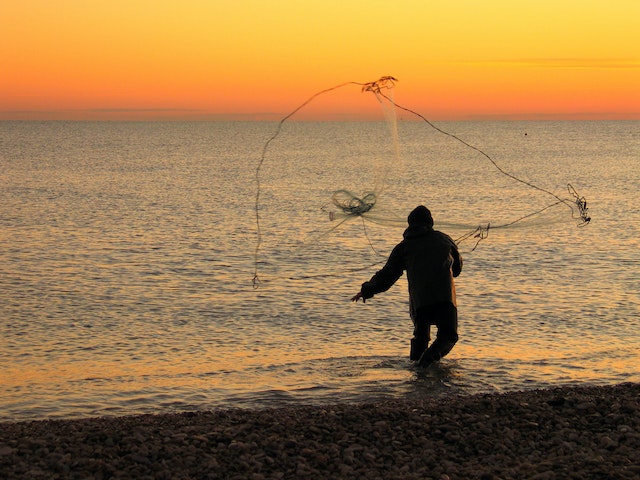
San Juan del Sur
San Juan del Sur is a picturesque coastal town situated on the southern Pacific coast of Nicaragua. Known for its stunning beaches, vibrant surf culture, and laid-back atmosphere, San Juan del Sur has become a popular destination for travelers, surf enthusiasts, and expatriates. Here’s a closer look at this charming Nicaraguan town:
Beaches: San Juan del Sur is renowned for its beautiful beaches. The main beach, Playa San Juan del Sur, is a hub of activity, with a crescent-shaped shoreline offering plenty of space for swimming, sunbathing, and beach sports. Nearby beaches like Playa Maderas and Playa Remanso are popular for surfing and swimming.
Surfing: San Juan del Sur is a mecca for surfers of all skill levels. The town is surrounded by numerous surf breaks with consistent waves, making it an ideal destination for both beginners and experienced surfers. Surf schools and rental shops are readily available.
Sunsets: San Juan del Sur is famous for its breathtaking sunsets over the Pacific Ocean. Many visitors and locals gather on the beach or at beachfront bars to witness the stunning evening spectacle.
Vibrant Nightlife: The town comes alive at night, offering a lively and eclectic nightlife scene. You can find beachfront bars, restaurants, and clubs that host live music, dance parties, and social gatherings. The atmosphere is particularly energetic on weekends and during peak tourist seasons.
Local Cuisine: San Juan del Sur boasts a diverse culinary scene, offering a mix of local Nicaraguan cuisine and international dishes. Fresh seafood, traditional dishes like gallo pinto (rice and beans), and international options are available at various eateries.
Fishing and Water Activities: The town’s proximity to the ocean provides opportunities for fishing charters, boat tours, and water sports such as snorkeling and kayaking. Many locals offer fishing trips, giving visitors a chance to catch their dinner.
Nature and Adventure: The surrounding area offers opportunities for outdoor adventures, including hiking, zip-lining, and horseback riding. You can explore nearby nature reserves and parks, such as the Jesus de la Misericordia statue viewpoint.
Artisan Markets: San Juan del Sur has a thriving artisan market where you can shop for local crafts, souvenirs, and handmade goods. It’s an excellent place to find unique gifts and mementos of your visit.
Relaxed Atmosphere: Despite its popularity, San Juan del Sur maintains a relaxed and laid-back atmosphere. It’s a place where you can unwind, enjoy the beach life, and connect with fellow travelers.
Expat Community: San Juan del Sur has a growing expatriate community, particularly retirees and digital nomads, drawn to its affordable cost of living, pleasant climate, and beachside lifestyle.
San Juan del Sur, Nicaragua, offers a blend of natural beauty, outdoor adventures, and a vibrant beach culture. Whether you’re a surfer, a beach lover, or simply seeking a tranquil coastal retreat, this charming town on the Pacific coast provides a unique and inviting experience in Central America
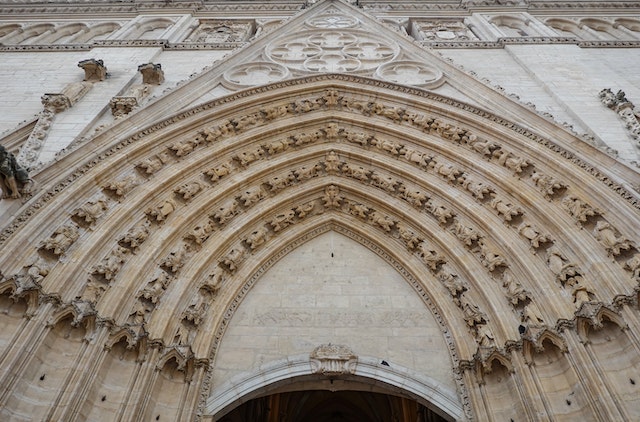
León
León is a historic and culturally rich city located in northwestern Nicaragua, Central America. Known for its colonial architecture, lively cultural scene, and proximity to natural wonders like volcanoes and beaches, León is a destination that offers a unique blend of history, art, and adventure. Here’s a closer look at this captivating Nicaraguan city:
Colonial Heritage: León is one of Nicaragua’s oldest cities, founded in 1524 by Spanish conquistador Francisco Hernández de Córdoba. Its historic city center is a UNESCO World Heritage Site, characterized by well-preserved colonial-era architecture, including colorful buildings, churches, and cobblestone streets.
Cathedral of León: The city is renowned for its stunning Cathedral of León, officially named the Basilica Catedral de la Asunción. This grand cathedral boasts both baroque and neoclassical architectural elements and is one of the largest in Central America. Visitors can climb to the cathedral’s rooftop for panoramic views of the city.
Cultural Scene: León is a cultural hub in Nicaragua, with a vibrant arts and music scene. The city has numerous art galleries, cultural centers, and theaters where visitors can enjoy live music, dance performances, and art exhibitions.
Local Cuisine: Nicaraguan cuisine is prominent in León, with a focus on traditional dishes like vigorón (a yuca and pork dish), nacatamales (a type of tamale), and gallo pinto (a rice and beans dish). The city’s restaurants and street food vendors offer a variety of culinary delights.
Museums: León features several museums that provide insights into its history and culture. The Museum of Legends and Traditions is a notable one, showcasing folklore and local traditions.
Central Park (Parque Central): The heart of the city is Parque Central, a lively central square surrounded by cafes, shops, and street vendors. It’s a popular spot for people-watching and socializing.
Volcanic Adventures: León is surrounded by volcanic landscapes, offering adventure opportunities such as hiking, volcano boarding on Cerro Negro (the youngest and most active volcano in Central America), and exploring lava fields.
Beach Escapes: León is also a gateway to nearby beaches on the Pacific coast. Playa Las Peñitas is a tranquil beach village just a short drive from the city, known for its relaxed atmosphere and stunning sunsets.
Local Markets: Visitors can explore local markets in León, where they can shop for handmade crafts, textiles, and souvenirs. The Mercado Central is a bustling market where you can immerse yourself in the local culture.
Education and Learning: León is home to several universities and educational institutions, attracting students and researchers from around the world. Language schools and cultural exchange programs are also popular among international visitors.
León, Nicaragua, is a city that seamlessly blends its colonial past with a vibrant cultural present. Whether you’re exploring its historic streets, hiking volcanoes, or relaxing on nearby beaches, León offers a multifaceted experience that showcases the rich heritage and natural beauty of Nicaragua
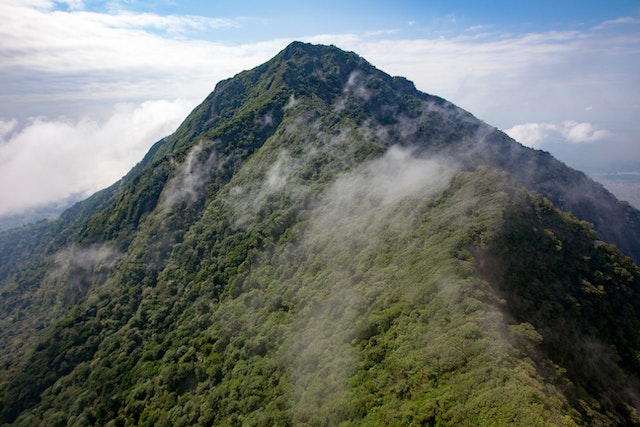
Matagalpa
Matagalpa is a charming city nestled in the cool and picturesque highlands of northern Nicaragua, Central America. Known for its lush coffee plantations, beautiful mountain landscapes, and temperate climate, Matagalpa offers a serene and unique experience for travelers seeking a respite from the heat and a taste of Nicaragua’s rural beauty. Here’s a closer look at this captivating Nicaraguan city:
Coffee Culture: Matagalpa is at the heart of Nicaragua’s coffee-growing region. The surrounding hills are covered with coffee plantations, and the city itself is often referred to as the “Pearl of the North.” Coffee enthusiasts can explore the coffee farms, learn about the coffee-making process, and even participate in coffee tastings.
Mild Climate: Thanks to its elevation, Matagalpa enjoys a mild and refreshing climate that contrasts with the tropical heat of many other Nicaraguan cities. The cooler temperatures make it an ideal escape from the sweltering lowland areas, particularly during the dry season.
Hiking and Nature: The region surrounding Matagalpa is a paradise for nature lovers and hikers. The city is surrounded by verdant hills, cloud forests, and pristine rivers. There are numerous hiking trails that lead to breathtaking viewpoints and waterfalls, such as the Cascada Blanca and the Cerro Apante.
Waterfalls and Natural Wonders: Matagalpa is home to some remarkable natural attractions, including the Cascada de la Luna, a stunning waterfall surrounded by lush vegetation. The Selva Negra Nature Reserve is another nearby treasure, featuring hiking trails, wildlife viewing, and a coffee farm.
Culture and Traditions: Matagalpa boasts a vibrant cultural scene, with traditional music, dance, and festivals celebrated throughout the year. The city’s local market is a hub of activity, offering a chance to sample Nicaraguan cuisine and shop for handmade crafts and local products.
Artisanal Crafts: Matagalpa is known for its artisanal crafts, including pottery, woodwork, and textiles. Visitors can explore local workshops and markets to purchase unique handmade souvenirs.
Quaint Streets: The city itself is characterized by colonial-era architecture, cobblestone streets, and colorful buildings. Walking through Matagalpa’s streets provides a glimpse into its colonial past and the slower pace of life in the highlands.
Coffee Tours: Coffee tours in Matagalpa offer visitors the opportunity to gain insights into the coffee-making process, from bean to cup. Many coffee farms welcome tourists and provide educational tours about the history and cultivation of coffee.
Local Cuisine: Matagalpa offers a range of traditional Nicaraguan dishes, often featuring ingredients sourced from the region. Dishes like tamales, quesillos (cheese-filled tortillas), and various stews are popular among locals and visitors alike.
Community Engagement: Matagalpa provides opportunities for travelers to engage with local communities through volunteering and cultural exchange programs. These initiatives allow visitors to contribute to local development while gaining a deeper understanding of Nicaraguan life.
Matagalpa, Nicaragua, is a city that combines natural beauty, coffee culture, and a tranquil atmosphere. Whether you’re interested in exploring coffee farms, hiking through cloud forests, or immersing yourself in local traditions, Matagalpa offers a unique and rejuvenating experience in the heart of Nicaragua’s highlands
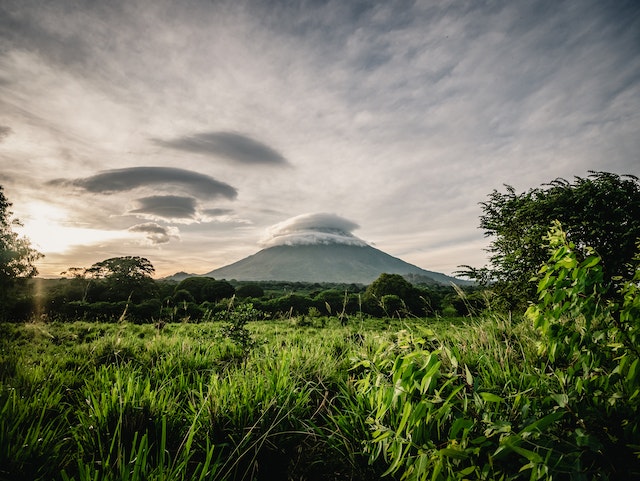
Ometepe Island
Ometepe Island is a unique and enchanting destination located in Lake Nicaragua, Central America. This island, formed by two majestic volcanoes rising from the depths of the lake, offers a perfect blend of natural beauty, outdoor adventures, and a relaxed, island vibe. Here’s a closer look at the captivating Ometepe Island:
Volcanic Beauty: Ometepe Island is formed by two volcanoes, Concepción and Maderas. Concepción, the larger and more active of the two, stands at 5,280 feet (1,610 meters) and is a striking feature of the island’s landscape. Maderas, the other volcano, is known for its lush cloud forest and crater lake.
Outdoor Adventures: The island is a paradise for outdoor enthusiasts. Hiking is a popular activity, with trails leading to the summits of both volcanoes. Climbing Concepción is a challenging endeavor, while hiking Maderas takes you through dense forests and rewards you with a picturesque crater lake at the top.
Lake Nicaragua: The island is surrounded by Lake Nicaragua, the largest freshwater lake in Central America. The lake offers opportunities for swimming, kayaking, paddleboarding, and fishing. It’s a tranquil setting for water-based activities and relaxation.
Wildlife: Ometepe is home to a diverse range of wildlife, including howler monkeys, capuchin monkeys, a variety of bird species, and colorful butterflies. Birdwatching and wildlife spotting are popular pastimes on the island.
Petroglyphs and Archaeology: Ometepe has several ancient petroglyphs and archaeological sites, providing insights into the island’s indigenous history. The El Ceibo Museum on the island offers displays on the island’s history and culture.
Charming Villages: The island has several charming villages, with Moyogalpa and Altagracia being the largest. These villages offer a glimpse into local life and culture. You’ll find markets, restaurants, and accommodations catering to travelers.
Relaxation and Tranquility: Ometepe Island is an ideal destination for those seeking relaxation and a slower pace of life. Many visitors come here to unwind, take in the stunning natural surroundings, and embrace the island’s laid-back atmosphere.
Community Tourism: Ometepe has embraced community-based tourism initiatives, allowing visitors to connect with local communities and learn about their way of life. Homestays and cultural experiences are available for those interested in engaging with the island’s residents.
Sunsets: Ometepe Island is renowned for its breathtaking sunsets over Lake Nicaragua. There’s nothing quite like watching the sun dip below the horizon while casting a warm glow over the volcanoes and the lake.
Sustainable Tourism: Efforts are being made to promote sustainable and eco-friendly tourism on Ometepe Island. Many accommodations and tour operators prioritize environmental conservation and responsible tourism practices.
Ometepe Island, Nicaragua, is a destination that invites travelers to immerse themselves in the beauty of nature, connect with local communities, and enjoy a tranquil island getaway. Whether you’re scaling volcanoes, exploring archaeological sites, or simply relaxing by the lake, Ometepe offers a one-of-a-kind experience in the heart of Central America
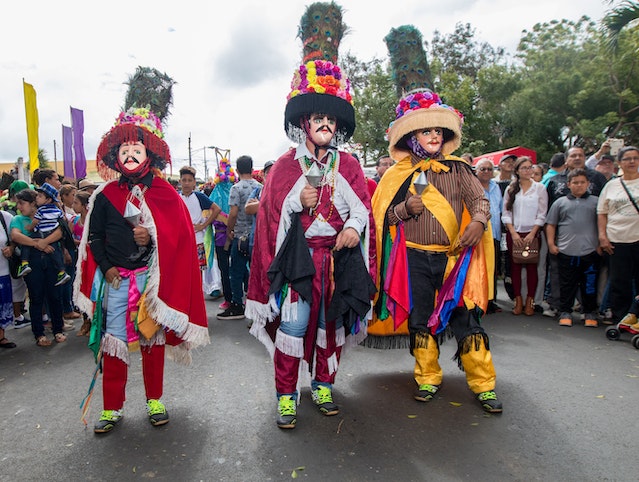
Jinotepe
Jinotepe is a charming city situated in the Carazo department of Nicaragua, Central America. Nestled in the country’s Pacific lowlands, Jinotepe is known for its pleasant climate, rich cultural heritage, and agricultural activities. Here’s a closer look at this vibrant Nicaraguan city:
Agricultural Hub: Jinotepe is primarily an agricultural city, with its economy centered around activities such as coffee cultivation, tobacco farming, and the production of various fruits and vegetables. The fertile soil and favorable climate in the region make it ideal for these agricultural endeavors.
Climate: The city enjoys a mild and temperate climate due to its elevation, earning it the nickname “City of Flowers and Poets.” The cooler temperatures make Jinotepe a refreshing escape from the tropical heat of the lowland areas.
Cultural Festivals: Jinotepe celebrates various cultural festivals and religious events throughout the year. One of the most famous festivals is the “Baile de la Gigantona,” a traditional dance where people parade with giant puppets representing Spanish colonialists and indigenous people.
Local Cuisine: Visitors can savor traditional Nicaraguan cuisine in Jinotepe. Local specialties include nacatamales (a type of tamale), vigorón (a yuca and pork dish), and tiste (a traditional Nicaraguan drink made from ground corn and cocoa). Street food vendors offer tasty treats like tacos and quesillos (cheese-filled tortillas).
Artisan Markets: Jinotepe features local markets where you can purchase fresh produce, handmade crafts, and traditional goods. These markets provide insight into the local culture and offer opportunities to sample authentic Nicaraguan dishes.
Educational Institutions: The city is home to several educational institutions, including schools and universities. This educational presence contributes to the city’s vibrant and youthful atmosphere.
Local Festivities: Jinotepe has a lively atmosphere during local festivities and holidays. Residents participate in parades, dances, and live music performances that showcase the city’s cultural traditions.
Sustainable Agriculture: The region around Jinotepe has seen efforts to promote sustainable and eco-friendly agricultural practices, which align with global trends toward responsible farming and environmental conservation.
Scenic Beauty: Jinotepe is surrounded by lush landscapes, making it a pleasant place for nature enthusiasts. The rolling hills and greenery provide opportunities for hiking, birdwatching, and exploring the pristine natural beauty of Nicaragua.
Coffee Culture: Like many parts of Nicaragua, Jinotepe has a connection to the country’s thriving coffee industry. Coffee enthusiasts can visit local coffee farms to learn about the coffee-making process and sample some of the region’s finest beans.
Jinotepe, Nicaragua, is a city that offers a taste of traditional Nicaraguan culture, agricultural traditions, and a welcoming atmosphere. Whether you’re interested in exploring local festivals, savoring authentic cuisine, or immersing yourself in the region’s natural beauty, Jinotepe provides a unique and off-the-beaten-path experience in Central America
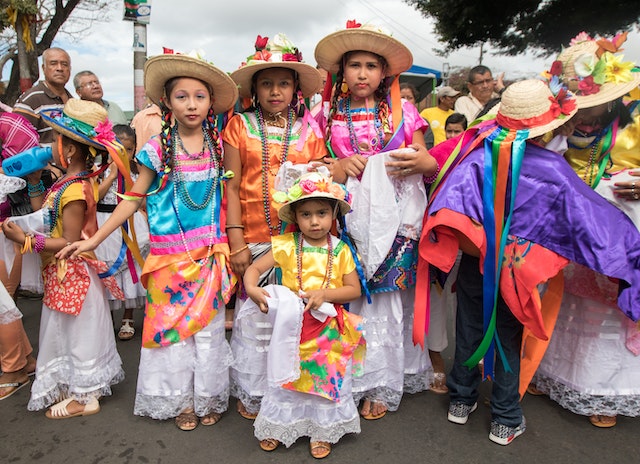
Estelí
Estelí is a vibrant and culturally rich city located in northwestern Nicaragua, Central America. Known for its tobacco production, scenic landscapes, and welcoming community, Estelí offers visitors a taste of Nicaraguan culture, outdoor adventures, and a relaxed atmosphere. Here’s a closer look at this captivating Nicaraguan city:
Tobacco Capital: Estelí is often referred to as the “Tobacco Capital of Nicaragua” due to its prominent role in the country’s cigar industry. The region is known for producing some of the world’s finest cigars, attracting enthusiasts and aficionados from around the globe. Cigar factories and tobacco plantations offer tours where visitors can learn about the cigar-making process.
Cultural Heritage: Estelí boasts a rich cultural heritage, with influences from indigenous communities, Spanish colonialism, and more recent immigration. The city’s architecture reflects these diverse influences, and its residents celebrate various cultural festivals and traditions throughout the year.
Local Cuisine: Estelí offers a range of traditional Nicaraguan dishes, including nacatamales (a type of tamale), vigorón (a yuca and pork dish), and gallo pinto (a rice and beans dish). Street food vendors and local eateries serve up these tasty treats, providing an authentic culinary experience.
Artisanal Crafts: The city is known for its artisanal crafts, including pottery, leather goods, and handmade textiles. Visitors can explore local workshops and markets to purchase unique souvenirs and gifts.
Community Tourism: Estelí embraces community-based tourism initiatives, allowing visitors to connect with local communities and learn about their way of life. Homestays, cultural exchanges, and volunteering opportunities are available for those interested in engaging with the city’s residents.
Outdoor Adventures: The region surrounding Estelí is known for its stunning natural beauty. Hiking, horseback riding, and birdwatching are popular activities in nearby nature reserves and parks. The Tisey Estanzuela Natural Reserve, for example, offers scenic trails and breathtaking viewpoints.
Local Markets: Estelí has local markets where you can shop for fresh produce, handicrafts, and traditional goods. The markets provide an opportunity to immerse yourself in the local culture and interact with friendly vendors.
Education and Learning: Estelí is home to several universities and educational institutions, contributing to a youthful and dynamic atmosphere. Language schools and cultural exchange programs are also popular among international visitors.
Scenic Beauty: The city is surrounded by picturesque landscapes, including rolling hills and lush greenery. These natural settings are ideal for relaxation and exploration, offering a serene contrast to the hustle and bustle of urban life.
Community Spirit: Estelí is known for its warm and welcoming community. Visitors often find that the city’s residents are eager to share their culture, traditions, and stories, creating a sense of belonging for travelers.
Estelí, Nicaragua, is a city that combines a rich cultural tapestry, outdoor adventures, and a friendly atmosphere. Whether you’re exploring its artisanal crafts, hiking through natural reserves, or enjoying traditional cuisine, Estelí offers a unique and enriching experience in the heart of Nicaragua
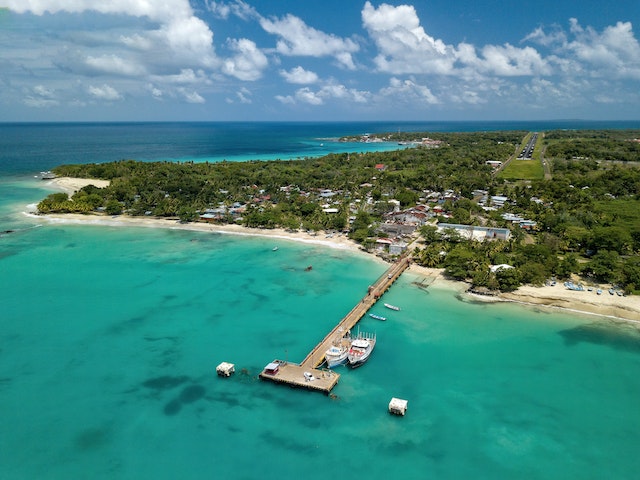
Rivas
Rivas is a historic city located in southwestern Nicaragua, Central America. Situated near the Pacific coast, Rivas is known for its cultural heritage, proximity to natural wonders, and its role as a gateway to some of Nicaragua’s most popular destinations. Here’s a closer look at this captivating Nicaraguan city:
Historic Significance: Rivas is one of Nicaragua’s oldest cities, founded in 1535 by Spanish colonizers. Its historic center features colonial-era architecture, including the Iglesia de San Pedro, a historic church dating back to the 16th century.
Gateway to San Juan del Sur: Rivas serves as the gateway to the nearby beach town of San Juan del Sur, a popular destination for surfers and beachgoers. Many travelers pass through Rivas on their way to San Juan del Sur, taking the opportunity to explore the city’s cultural sites.
Cultural Attractions: Rivas boasts cultural attractions such as museums, galleries, and theaters. The city’s cultural scene offers insights into its history and artistic traditions.
Local Cuisine: Visitors can savor traditional Nicaraguan dishes in Rivas, including gallo pinto (a rice and beans dish), nacatamales (a type of tamale), and vigorón (a yuca and pork dish). The city’s eateries and street food vendors offer a variety of culinary delights.
Local Markets: Rivas features local markets where you can shop for fresh produce, handicrafts, and traditional goods. These markets provide a glimpse into local life and culture.
Natural Beauty: The city is surrounded by natural beauty, including lush forests, volcanic landscapes, and nearby beaches. Ometepe Island, formed by two volcanoes in Lake Nicaragua, is just a short ferry ride away and offers a unique natural experience.
Transport Hub: Rivas is a transportation hub, making it a convenient base for exploring the region. Buses and taxis connect Rivas to various destinations in Nicaragua, including the capital, Managua.
Community Engagement: The city offers opportunities for travelers to engage with local communities through volunteering and cultural exchange programs. These initiatives provide a deeper understanding of Nicaraguan life and traditions.
Climate: Rivas enjoys a tropical climate with distinct wet and dry seasons. The dry season, which typically runs from December to April, is the most popular time for tourism.
Beach Escapes: Rivas is near some of Nicaragua’s beautiful beaches along the Pacific coast. Whether you’re looking to surf, relax on the beach, or enjoy water sports, there are options for every type of beach enthusiast.
